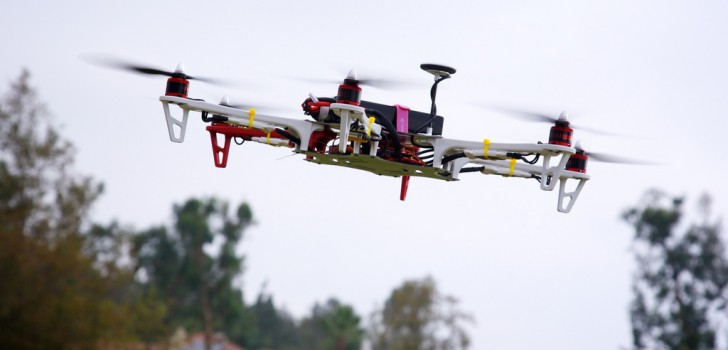Last year, Google announced its plans to get in the drone delivery game and joined the likes of Amazon in the quest to make such drones a reality. Google has been testing its Project Wing in Australia for the past year and is now ready to bring testing to the United States.
According to documents filed with the Federal Aviation Administration (FAA), Google has been cleared to test two separate drones in the U.S. The first model, with the codename M2 was approved in early October and the B3 soon followed.
Google’s version of the delivery drone – at least the original model – looked like a tiny airplane and launched into the air facing upwards, like a space shuttle. It makes its deliveries by lowering a package attached to a long string.
Due to its collaboration with NASA, Google was able to skip some tedious steps before receiving the go-ahead to start testing its drones in the U.S.
In fact, Google has joined several companies, including Amazon, in working with NASA, the FAA, other government agencies and researchers to turn the drone delivery program into a reality.
Back in July, Amazon Prime Air unveiled its plans at a NASA convention. Central to its proposal is the creation of a designated 200 foot slice of air, located between 200 feet and 400 feet from the ground, that would only be used by drones equipped with the technology that will allow them to fly safely and autonomously. A further 100 feet of airspace, between 400 feet and 500 feet, would be a no-fly zone. If Amazon’s proposed plans are accepted by the Federal Aviation Administration (FAA), the American public could see tens of thousands of drones whizzing by in the air within the next several years.
Amazon’s proposals are much more ambitious than what the FAA proposed in its recent attempt to draft commercial drone rules earlier this year. In that draft legislation, the FAA proposed that commercial drones only fly during the day and within the plain view of a licensed operator from the ground. These two restrictions alone make Amazon’s Prime Air delivery system virtually impossible.
As of now, it is unclear whether the FAA will allow for drone delivery, a move that Amazon Prime Air vice president Gur Kimchi calls behind the times. Kimchi stated that current drone operators and companies are not cooperating with each other to create a safe environment. Kimchi stated that Amazon’s proposals “can only be safe if everyone else is safe.” He further stated that, “[t]he key here is to simplify the airspace, not complicate.”
Parimal Kopardekar, head of NASA’s drone management project stated that he hopes the United States can adopt a universal drone traffic system before a tragedy occurs. “It’s crucial,” he stated. Without a uniform system, “everyone flies anywhere they want to and they end up going into no-fly zones and into firefighting efforts and near airports.”
As a result, several companies are working together and NASA’s short-term goal is to develop and demonstrate a system that will safely allow for drone operations within five years. Within 10 to 15 years, the agency hopes to safely enable the huge increase in the number of delivery drones.
Stay Connected